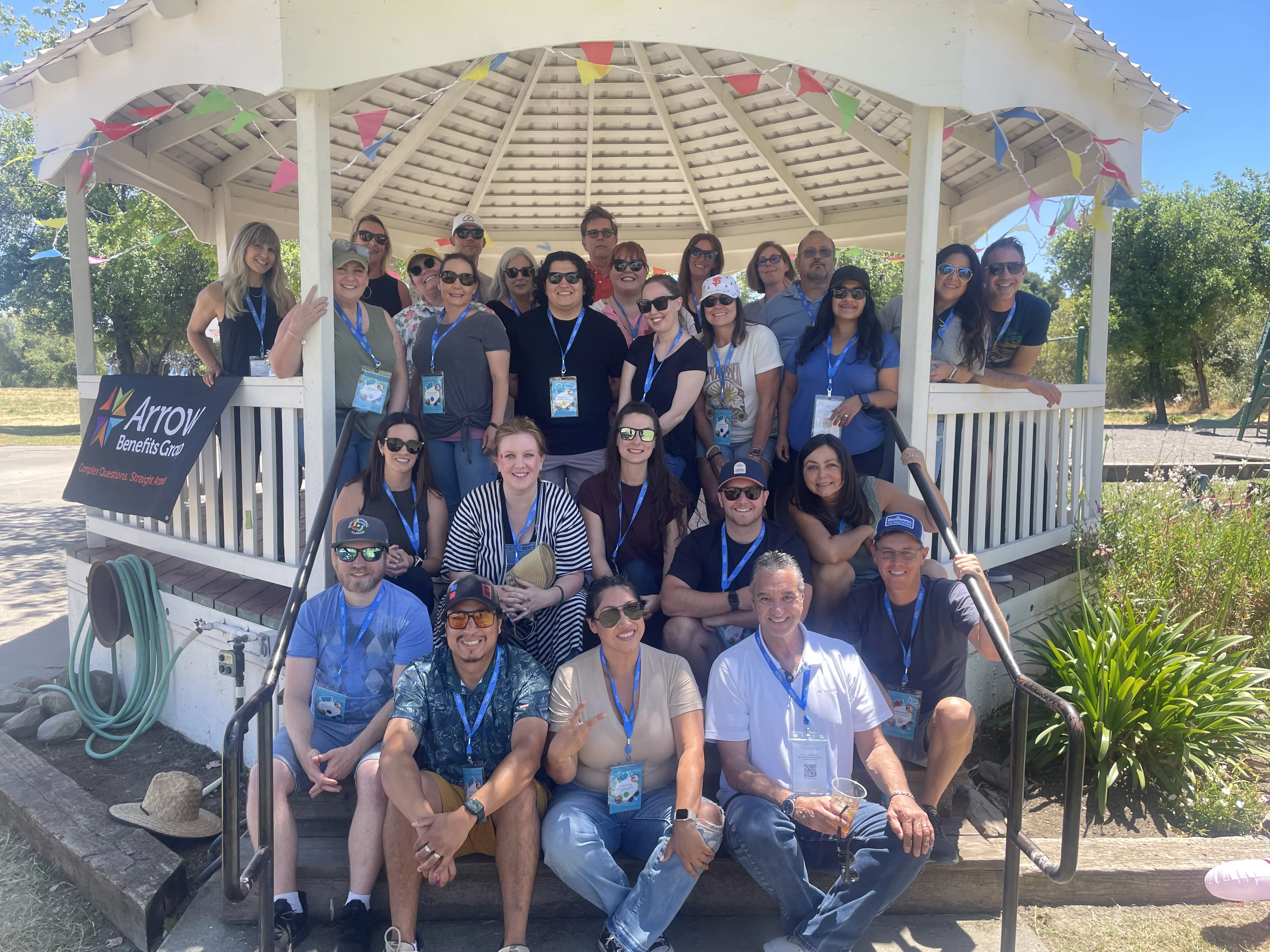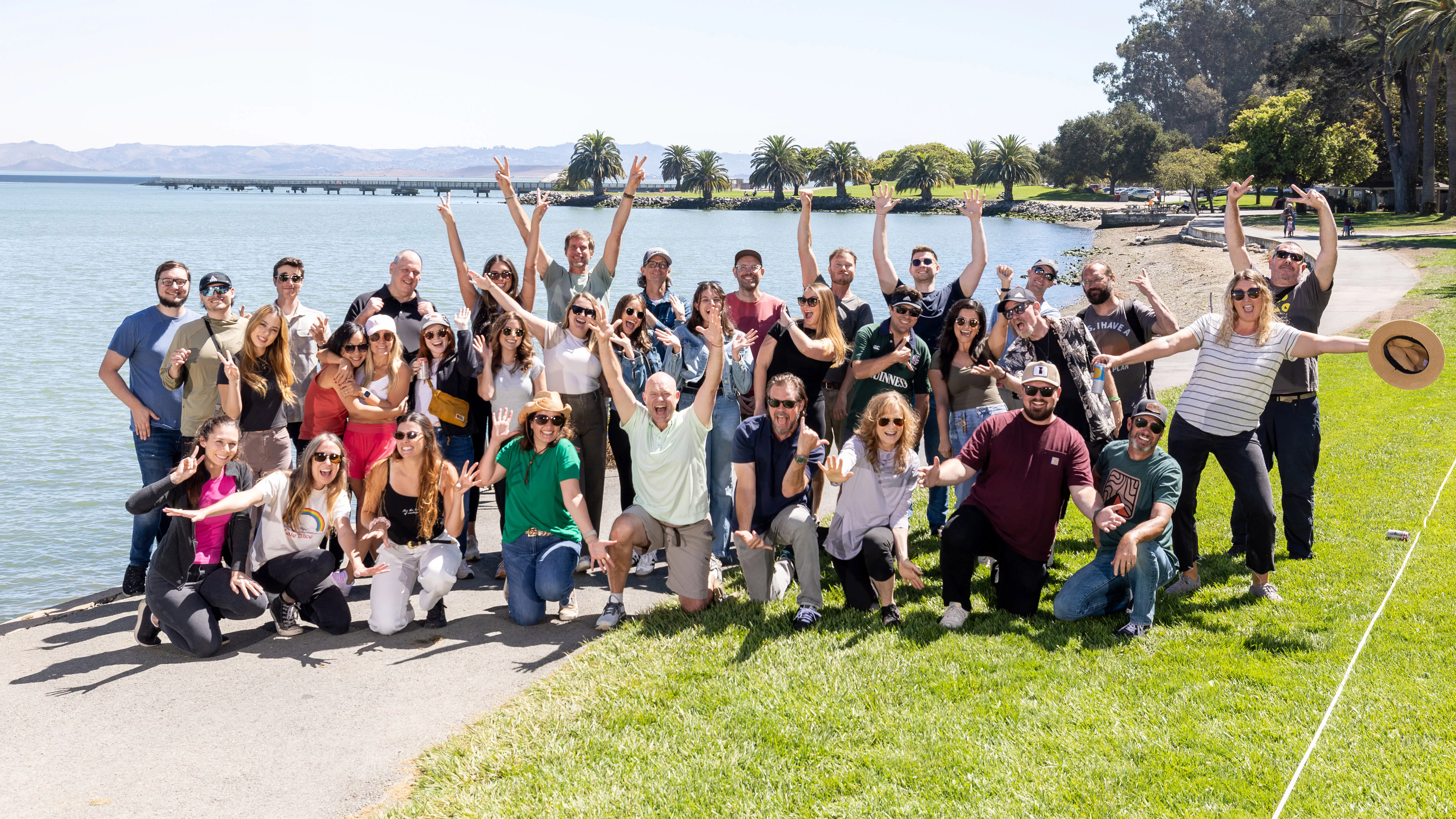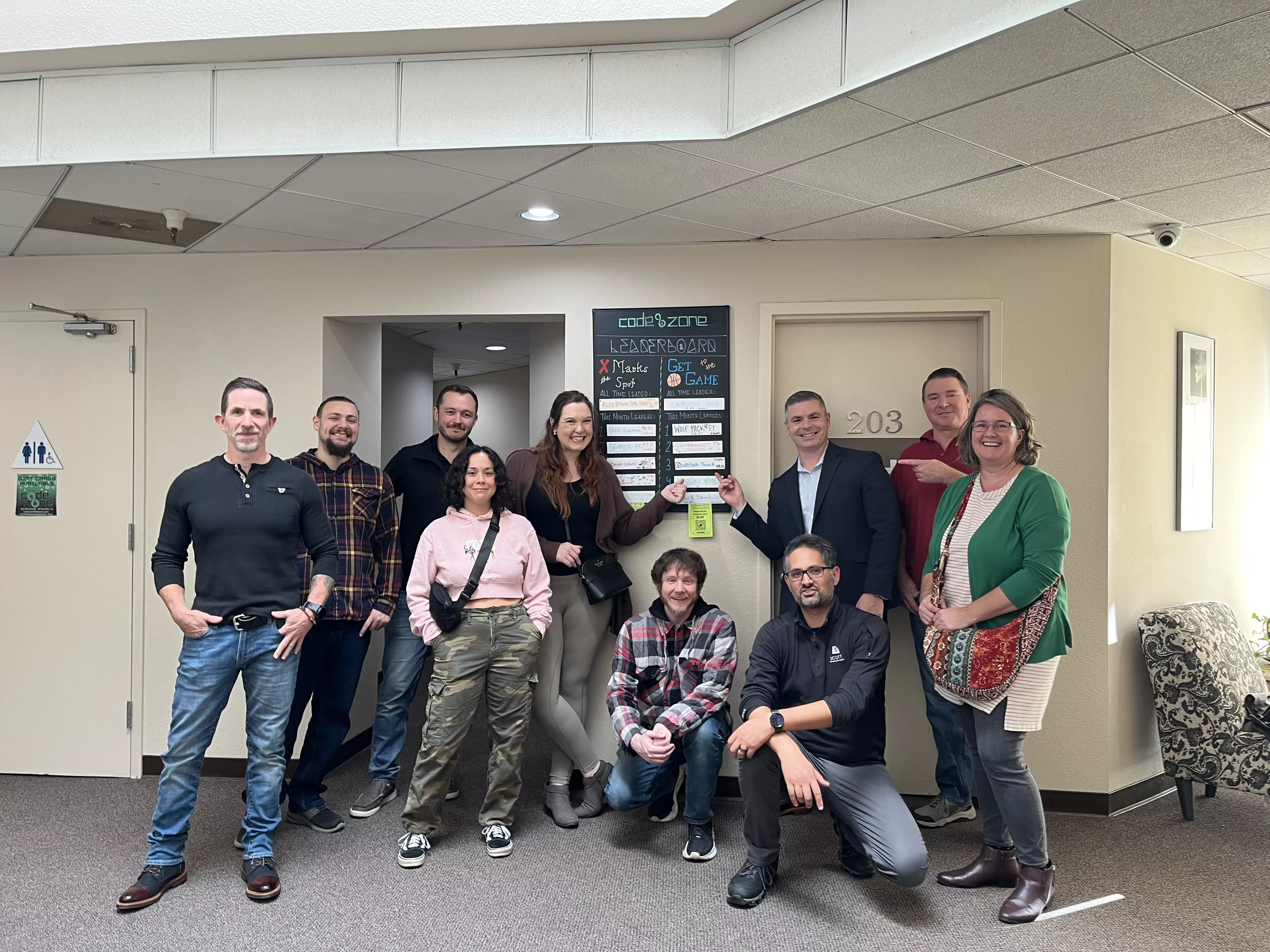
As more and more remote workers have returned to the office in the years after the shelter in place order was lifted, many are hoping to retain the work-life balance that they had come to appreciate, post-pandemic. We spoke with three North Bay companies that are finding the sweet spot for attracting talent and keeping their employees happy.
Emily Hodges Wallace is vice president and employee benefits advisor at Arrow Benefits Group, an insurance services company in Petaluma. We spoke with her about the work culture she sees client companies trying to create as well as the culture that Arrow maintains for its own employees.
In her work selling benefits packages Wallace says that every company has a different culture or goals for their employees. She says most of the companies she works with want their employees to have some work-life balance and to have joy in their job, whether that’s at home or an office.
Wallace says companies also want their employees to have peace of mind. “There’s a lot of mental health stress on employees that I’m seeing across the board and they want them to come to work as a whole being that’s not distracted,” she says.
“A company may focus on helping employees get more steps in, more exercise,” Wallace says. “Some have exercise competitions, pay for gyms or have massage therapists come in. Some will do raffle prizes for Fitbits.”
She says other companies want to help focus employees on eating healthily. “Like, if there’s a large diabetes element in their company, they might want to talk about healthy foods and bring in only healthy foods instead of donuts or something,” she says.
One company she works with has a really busy fourth quarter. If somebody has a baby prior to the fourth quarter the company gives them a year of diapers free to motivate them during that busy time.
Some companies want to help their employees with financial wellness. “We have financial wellness as a component right now because if employees are worrying about paying the rent they’re not going to come to work as a full employee,” Wallace says.
Wallace says such benefits help ensure employees are happy to come to work, or to work from home. “I’m a big proponent of working from home.”
Wallace understands the importance of work-life balance personally, as she took on the caregiving for her elderly parents and found that working from home allowed her to do it all. “I was able to balance a very aggressive career with living with my parents and caring for them to their end of life,” she says.
“For me it was a blessing that I got that time and that my company was willing to allow me the flexibility to do my job in the hours and the time that I had available,” she says.

Prior to the pandemic, Arrow employees all came into the office. “Everybody was on deck every single day,” Wallace says. “The pandemic shook everybody up a lot. We had to pivot very quickly to even do our job—to being all remote, and putting into place technology and systems so that everybody could work from different areas.”
Wallace says there was an immediate ramping up of technology. “It wasn’t just with Zoom for everybody, it was more like a client-management database that everybody could access from afar and enabling teams to communicate,” she says.
They created a virtual culture committee so that people would feel connected, even in their homes. “Employees were suddenly at home and no longer getting that water cooler talk or even seeing anybody,” Wallace says.
They hosted online marshmallow roasts and had virtual drinks together. They sent lunches out to people. They sent virtual birthday presents. They even did an online escape room together.
Wallace says these things helped employees feel connected. “People still hunger for a relationship,” she says. “When people feel disconnected from something is when they’re no longer an effective employee or prone to a lot of mental-health issues. All of these things helped create the feeling that even though we’re far apart, we’re not far apart.”
Arrow is now committed to the option of working from home and is not considering a back-to-office mandate. They still have in-person days for trainings, face-to-face collaboration or to work on projects together and hear people’s ideas. But Wallace notes that these are special and fun.
“Our employees are really happy,” she says. “We have a young dad and being at home meant that he could experience more of his child.”
Wallace believes the biggest work-life balance improvement has been for women.
“For me, it was a huge deal that I could balance caring for my parents and still work because I’m doing it right here in my living room and actually probably working more hours than I was before. But I also will get up and put laundry in the dryer—which is really helpful.
“For balance for women, it’s like, OK, ‘I’ve got to take my child to the dentist, I’ll be back in a half hour, but I’m going to work a half hour extra today,’” Wallace says. The advantages extend from being able to attend kids’ school or sporting events, to simply not being stuck in commute traffic.
“I talked to somebody the other day and she said, ‘My car was getting killed on the freeways all the time—I’m not doing that now and I’m more present when I’m home with my family,’” Wallace says.
Wallace says that the option to work from home took a little bit of that stress off. This is because the majority of the women are also the homemakers and bearing a lot of the responsibility for that family life. “It just gave them a little more space,” she says.
This benefit has allowed Arrow to attract top talent from companies that don’t offer their employees that flexibility. “And so mom suddenly has three kids that she’s driving everywhere and dropping off in the morning and maybe her mother lives with her because she’s taking care of her, and she’s like, ‘I’m not coming back.’”
Wallace says she sees these moms happily working eight hours and often sees them still working at night. She gently encourages them to stop working because that’s not helping to have a good work-life balance.
“Speaking as one who has four children and five grandchildren, don’t do this,” she tells them. “Turn it off. It’s only insurance.”
She points out it also allows Arrow to retain quality staff and attract new talent.
“A lot of companies are losing out on that benefit of feeding back into a healthier workforce in our industry,” Wallace says. “[Instead, they’re] saying, ‘No, I really need people back.’ Well, some of those women don’t want to come back. So we’re picking them up.
“We’ve gotten some really good talent that we would not have normally gotten because people are like, ‘Yeah, I’m not going to go back to that every day,’” Wallace says.
****
Another Bay Area company that strives to create a healthy work culture and work-life balance for their employees is Kiosk, a marketing agency in Novato. Kiosk offers services like crafting brand identity and designing engaging and optimizable digital experiences that empower business growth. They maintain a team of top-notch specialists in marketing, web, design, strategy and analytics.
Kiosk has been offering a hybrid work model long before the pandemic with its ‘‘work from home Fridays” and employees appreciated the opportunity. It’s just one of the many things the company does to create a supportive, inclusive work culture. They’ve found it benefits the employees, the company and its clients.
We spoke with Susi Lynam, vice president of People Operations at Kiosk. “Our owners were sensitive to the fact that a lot of our folks just would like an opportunity to work from home periodically,” Lynam says. “And Fridays in the Bay Area can be challenging from a commute standpoint.”
That meant when the pandemic forced a shut down, Kiosk was ready. “That kind of was the springboard for us when the pandemic hit,” Lynam says. “We were really well set up for our employees to just seamlessly go fully remote for a while.”

It worked so well that the Kiosk leadership decided it was a beneficial way of operating. Once they were able to return to the office, Kiosk allowed employees to choose their own schedule— whether it was to work from home full time, in the office full time or a hybrid schedule.
Many of its employees choose to work a hybrid schedule where they are in the office three days per week. “There were a good handful of folks who were ready to get back to that in-person opportunity while still retaining time they can work from home,” Lynam says.
The ability to work from home is just a part of the culture that Kiosk supports, which is focused on flexibility, but thrives on collaboration. Part of that strategy involves a good social atmosphere between the employees.
“Our owners are super cognizant of the fact that it’s important to spend time together that’s just for fun,” Lynam says. “That helps us to work together the rest of the time.”
Kiosk hosts a few full-day events every year, as well as things like one-hour Zoom meetings with a trivia contest. “During the pandemic, we did that a lot so that we could continue to connect even though we were fully remote,” Lynam says.
In the spring they host a daylong event called Kiosk Forward with a look into how the company has been doing over the last year. It’s also a time for employees to be involved in strategic planning and company direction for the coming year.
Lynam says they always include a bit of fun at their events and host a couple of full-day outings that are simply for recreation. “I think people really appreciate the opportunity to come together in person,” she says. “Having the other folks who might be remote workers come in and have a chance for all of us to be together is a great opportunity.”
Lynam has been with the company for 12 years and says she believes the supportive culture at Kiosk helps with employee retention.

“We have always received that feedback when we talk to people, whether they’re coming in or even for those who move on, that they appreciate the flexibility and the company’s willingness to provide balance on a regular basis,” she says. “I think it helps us retain a lot of awesome employees.”
It has also helped Kiosk attract good talent. “Coming out of the pandemic, as we recruited, we were finding those folks who were ready to get back to in-person working and wanted that opportunity, but maybe a balance,” she says. “So that hybrid option was a win-win, you know, with a perfect balance for them.”
“I certainly think that when employees feel like they have a voice and an opportunity to help determine how they work it helps them be as productive and efficient as possible,” Lynam says.
“When employees are feeling supported and able to be productive and efficient that benefits the company,” Lynam says. “I think that also benefits our clients and we always want to keep that in mind too.”
*****
Scott Technology Group also sees that bigger picture when taking care of employees. The Rohnert Park-based company provides copiers, electronic document management and service plans to help businesses with technology needs.
Jeremy Ostrem, general manager at Scott Technology Group, says he believes a happy employee takes care of a customer very well—and that’s why they try to take good care of their employees.
“It’s our goal to do that as a culture,” Ostrem says. “We try to establish the practices that will get everyone together and still connect, even though we are working remotely right now. For example, we had a company breakfast this morning where we invited the whole company to do breakfast.”

Not everybody at Scott is working remotely. Ostrem works from the office and he says a few others do as well. They also have technicians who work in other people’s offices. “They still have to come here to get parts and go out,” Ostrem says.
Ostrem says they had a meeting right before the COVID lockdown took place because they saw the writing on the wall. “We determined that [working remotely] is going to come up, so we’re going have to know how to keep operations running.”
They started implementing practices that would help with remote work and, once in place, they noticed that it was actually a beneficial way of operating. “We lowered our square footage of our offices,” Ostrem says. “People are happy working at home.”
Ostrem was hearing from his employees that working from home meant fewer distractions. “You don’t have that person walking to the water cooler, then stopping in your office and talking to you, you know, for 20 minutes about the baseball game,” he says.
“People are generally more comfortable at home,” he says. “There’s no commute and that’s huge too. They don’t worry about travel. I’d say travel might be the biggest positive.”
Ostrem says they try to make sure employees still feel connected and part of the team and one way they do this is through monthly team meetings. “Microsoft Teams has been a huge help and allowed us to do this,” he says. “I think Microsoft understands the need for that collaboration even when you’re remote.”
He says they use such meeting times for both work and personal communication. “Sometimes we throw fun ice-breaker questions just to get people talking about their summer or anything they want to really.”
And they always urge face time on calls.
“One thing we encourage is whenever we call someone, that they flip open that camera—let’s see people’s faces,” Ostrem says. “I think that’s a huge benefit.”

They try to make sure everyone is getting together for camaraderie and fun, like company barbecues. Ostrem believes all these things help with employee retention because other companies may not be offering the same flexibility. “We find that employees that come here do stay here,” he says. “We keep our employees happy, and we keep them here for the long term.”
Perhaps one of the most impressive remote positions is with their warehouse manager who uses Docuware software tools.
“People often kind of laugh at us and say, ‘What? Your warehouse manager remote? That doesn’t work,’” Ostrem says. “We made it work because we’re a company that cares about the employees. So when she did have an opportunity to move out of town, we allowed it. And we retained her.”
“STG has always been like that with our employees—where we try to find a way. And I think that helps keep our employees happy.”
Trends toward remote work
The pandemic may have forever changed the way we approach work. The changes are employee-driven, as they look for companies that promote a positive work culture with a healthy work-life balance that includes the flexibility to work remotely.
According to Forbes Advisor, 20% of workers are now working remotely—and by 2025, a whopping 32.6 million Americans will be working remotely.
- 71% of remote workers prefer the work-life balance it affords them
- Most remote workers are between the ages of 24 to 35.
- 98% of workers would prefer to work remotely.
- 16% of U.S. companies are now fully remote.
- 69% of remote workers experience burnout from digital communication tools.
- 53% of remote workers feel disconnected from their coworkers.
- 37% of remote workers’ employers are monitoring their online activity.
- 73% of executives are concerned about possible security risks.
Source: forbes.com/advisor/business/remote–work–statistics
The top industries for remote work in 2024 are:
Computer & IT
Accounting & Finance
Marketing
Medical & Health
Project Management
Customer Service
Sales
Administrative
HR & Recruiting
Operations



